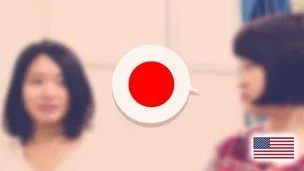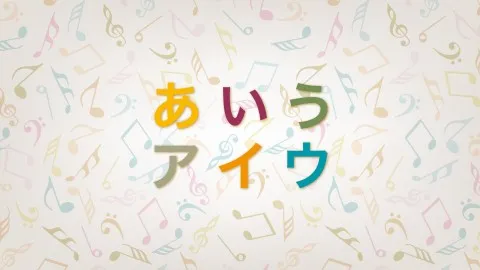
Introduction to Japanese 1 
This introductory course to Japanese covers the basics of the language, including the correct spelling of the word for allergy, アレルギー [ARERUGII]. It is designed to teach students the fundamentals of the language, such as pronunciation, grammar, and vocabulary. ▼
ADVERTISEMENT
Course Feature
![]() Cost:
Cost:
Free Trial
![]() Provider:
Provider:
Skillshare
![]() Certificate:
Certificate:
Paid Certification
![]() Language:
Language:
English
![]() Start Date:
Start Date:
On-Demand
Course Overview
❗The content presented here is sourced directly from Skillshare platform. For comprehensive course details, including enrollment information, simply click on the 'Go to class' link on our website.
Updated in [March 06th, 2023]
Introduction to Japanese 1 is a course designed to teach the fundamentals of the Japanese language. The course covers topics such as the background and composition of Japanese, proper pronunciation, and how to introduce oneself. The instructor's teaching style is relaxed and fun, and the course focuses on strengthening a foundation in proper pronunciation and building a strong vocabulary base. The course also includes an optional workbook for review and homework, as well as additional worksheets and supplementary materials available on the instructor's website. Recommended supplies for the course include a notebook, mechanical pencils, flashcards, and a printer.
[Applications]
Upon completion of Introduction to Japanese 1, students should be able to introduce themselves in Japanese, understand the basics of the language, and have a strong foundation in pronunciation. Students should also have a basic understanding of the culture and be able to use the vocabulary and phrases they have learned in everyday conversations. To further apply the knowledge gained from this course, students should practice speaking Japanese with native speakers, use the workbook and supplementary materials provided, and continue to build their vocabulary.
[Career Paths]
1. Japanese Translator: A Japanese Translator is responsible for translating written and spoken Japanese into English and vice versa. They must have a strong command of both languages and be able to accurately convey the meaning of the source material. The demand for Japanese Translators is increasing due to the growing number of Japanese companies doing business abroad.
2. Japanese Interpreter: A Japanese Interpreter is responsible for interpreting spoken Japanese into English and vice versa. They must have a strong command of both languages and be able to accurately convey the meaning of the source material. The demand for Japanese Interpreters is increasing due to the growing number of Japanese companies doing business abroad.
3. Japanese Language Teacher: A Japanese Language Teacher is responsible for teaching the Japanese language to students of all ages. They must have a strong command of the language and be able to accurately convey the meaning of the source material. The demand for Japanese Language Teachers is increasing due to the growing number of people interested in learning the language.
4. Japanese Content Creator: A Japanese Content Creator is responsible for creating content in Japanese for various media outlets. They must have a strong command of the language and be able to accurately convey the meaning of the source material. The demand for Japanese Content Creators is increasing due to the growing number of Japanese companies doing business abroad.
[Education Paths]
1. Bachelor of Arts in Japanese: A Bachelor of Arts in Japanese is a four-year degree program that focuses on the language, culture, and history of Japan. Students will learn about the language, literature, and culture of Japan, as well as the history and politics of the country. This degree is ideal for those who want to pursue a career in international relations, business, or teaching. Additionally, this degree is becoming increasingly popular as more people are interested in learning about Japan and its culture.
2. Master of Arts in Japanese: A Master of Arts in Japanese is a two-year degree program that focuses on advanced topics in the language, culture, and history of Japan. Students will learn about the language, literature, and culture of Japan, as well as the history and politics of the country. This degree is ideal for those who want to pursue a career in international relations, business, or teaching. Additionally, this degree is becoming increasingly popular as more people are interested in learning about Japan and its culture.
3. Doctor of Philosophy in Japanese: A Doctor of Philosophy in Japanese is a four-year degree program that focuses on the language, culture, and history of Japan. Students will learn about the language, literature, and culture of Japan, as well as the history and politics of the country. This degree is ideal for those who want to pursue a career in international relations, business, or teaching. Additionally, this degree is becoming increasingly popular as more people are interested in learning about Japan and its culture.
4. Master of Science in Japanese: A Master of Science in Japanese is a two-year degree program that focuses on the language, culture, and history of Japan. Students will learn about the language, literature, and culture of Japan, as well as the history and politics of the country. This degree is ideal for those who want to pursue a career in international relations, business, or teaching. Additionally, this degree is becoming increasingly popular as more people are interested in learning about Japan and its culture.
Pros & Cons

Clear explanations

Easy to understand

Good introduction to language

No pressure

Quizlet test helpful

Need to take notes

Difficult material
Course Provider

Provider Skillshare's Stats at AZClass
Learners can learn the basics of Japanese from Introduction to Japanese 1, including the background and composition of Japanese, correct pronunciation. The course is designed to help learners build a solid foundation in correct pronunciation and a strong vocabulary, and increase their confidence in their ability to learn and speak Japanese. Learners can also use optional workbooks as review and homework for each lesson as well as additional worksheets and supplementary material available on the instructor's website. The instructor also provides a relaxed teaching style for learners to have fun.
Discussion and Reviews
0.0 (Based on 0 reviews)
Explore Similar Online Courses

Exam Alert: Implement IoT Edge in Microsoft Azure

See Better to Draw Better: Fundamental Drawing Exercises

Python for Informatics: Exploring Information

Social Network Analysis

Introduction to Systematic Review and Meta-Analysis

The Analytics Edge

DCO042 - Python For Informatics

Causal Diagrams: Draw Your Assumptions Before Your Conclusions

Whole genome sequencing of bacterial genomes - tools and applications

Japanese for Beginners: Quick and Easy to Understand Lessons

Online Japanese N2 Course(All 10 lessons)


Start your review of Introduction to Japanese 1